
Larry Bell: Little Red Riding Hood, 1962; Untitled, c. 1980
A recent visit to La Jolla gave me the opportunity to see the newly remodeled Museum of Contemporary Art San Diego by Annebelle Selfdorf and her architectural team. The visit caused me to reflect on the many visits I have made to this museum over several decades and the role it has played in my development as an artist.
During my youth I spent a lot of time drawing and painting on about any surface I could, furniture, appliances, doors, walls, surfboards, friends’ cars. Days were spent at the beaches of southern California, surfing, water-skiing, and in general, hanging out with friends. I decided to take a break from college after my freshman year; that first Monday morning when we went to the beach, we found it was deserted. Great for about a day or two. Where was everyone? Oh yes, if they were not working at their full-time jobs, they would have gone off to college. It did not take long before I could see this was not going to be all that interesting. After working at part-time jobs, I eventually found a “real” job, earning enough money for rent and a car payment. After a year of full-time work and going to the beach on the weekends, I realized there was more to life than waiting for the perfect wave. During a transition period, alternating between surf and pop culture, I started going to the downtown library and local museums, at the time, The San Diego Museum of Fine Art in Balboa Park, and The La Jolla Art Center/Museum, known now as The Museum of Contemporary Art San Diego. During this period, I “retired” from surfing, and the former surf safaris “up the coast” gave way to road trips to Los Angeles and San Francisco, visiting galleries on La Cienega, LACMA, The Huntington, The Barnsdall Art Center, and The Pasadena Museum. I do not remember museums having restaurants or even coffee shops, so we would usually go to Barney’s Beanery. I saw some great shows during this period: Warhol, Stella at Ferus; Di Suvero, Reinhardt, Jo Baer at Virginia Dwan; Larry Rivers, Jasper Johns, and The Responsive Eye at Pasadena; shows at Rolf Nelson’s gallery; and retrospectives of Bonnard, Kienholz, and Picasso’s prints at LACMA. In San Francisco, SFMOMA was still on Van Ness, and there were only a few contemporary galleries of note at that time. The gallery at the San Francisco Art Institute showed some of the early FUNK artists. My introduction to the art of Robert Arneson was in a non-traditional venue.
In the meantime, my friend C.A. Scott and I rented various places we could use as work/studio space. One of those spaces was a storefront on the main street where we worked on hand crafted items and hung art on the walls. It was a ½ block from the beach, so we had a lot of visitors, and we got some attention in the local newspaper. Another studio was a barn that had been part of a riding stable, with a lot of space, like an industrial loft-space. My last studio at the beach was a space I shared with Alan Blanchard, a painter from England whose family had moved to Southern California. Alan had been a student at Chouinard and had been a studio assistant for John Altoon. We met when he had a scholarship at The Art Center in La Jolla.
This introduction serves as a backdrop to the art that was available to see. The La Jolla Museum served as a beautiful place to see real art: I remember a range of exhibitions there, from a major show of George Rouault, to group shows, beautiful, challenging art by contemporary Southern California artists; one memorable exhibition there included works by an artist using car hoods as the substrate for the painting. That was a work by an artist whose reputation was beginning to gain recognition: Judy Chicago. Barry La Vea’s endurance performance was an early conceptual work that challenged what art could be. Another memorable event was a ceramic demonstration by an artist from Japan; the potter’s wheel was set up on the sidewalk in front of the museum. The first wall drawing by Sol Lewitt I saw was here. From its early days, the museum has served as a venue for contemporary art, art that challenges one’s sensibilities, and made one question the nature of art. Dave Thompson turned one of the galleries inside out, blasting the outside of the windows with powerful jets of water, simultaneously obliterating the traditional view of the Pacific Ocean yet bringing the essence of it into your face.
It was not easy to find good contemporary art to see in San Diego at that time. The two most prominent artists working there at that time were Richard Allen Morris and John Baldessari. It was always inspiring to see their works when they put up exhibitions. I met John for the first time at his last show of paintings in San Diego, just before he moved to Los Angeles. George Nikolaidis and Guy Williams had been students at San Diego State when I was an undergraduate art student there. Williams moved to Los Angeles after graduating to be involved in a more dynamic art community. Nikolaidis collaborated with John on some well documented works that formed the cornerstone of conceptual art.
A recent visit to MCASD reaffirms the on-going commitment of the museum to collecting and showing beautiful and challenging art. Many of the then-young artists alluded to above have received international critical recognition. I’m always energized to see art by the artists I admire and draw inspiration from, especially in a museum that was important in my own development as an artist. One of the galleries in the newly expanded museum features artists known for their contributions to the California Light and Space movement. In addition to the artists featured in this review, there are equally powerful artworks throughout the other galleries.
As I moved from gallery to gallery I found exceptional works, by Ed Kienholz, David Hammons, Bruce Conner, Ai Weiwei, and three powerful, intimate scaled photographs by Carrie Mae Weems. On an opposing wall was a work new to me, a work that again confirms the role of the museum to present challenging works as this museum has done since its early days. At first glance, this painting looks like an homage to Hockney; I looked, walked by, and was drawn back, drawn back to look more closely at this painting. Jay Lynn Gomez references Hockney’s 1967 A Bigger Splash and updates it in No Splash 1993, which includes the workers not seen in Hockney’s painting. Back upstairs I saw an early Helen Frankenthaler stain painting; then paintings by Robert Motherwell, Larry Poons, and an early Robert Irwin. As I entered an intimate gallery surveying Irwin’s development culminating in one of his disc paintings, out of the corner of my eye I glimpsed an installation in the gallery where I had seen my first Sol Lewitt wall drawing, and the windows of David Thompson’s water works. My initial impression was that of a scrim or window tinting, but I was entering the gallery of several early paintings by Irwin, so my focus was there.
The gallery where I had seen the Sol Lewitt wall drawing and the windows that Thompson had blasted with jets of water had been transformed into an installation from 1997 by Robert Irwin. As you can see from my photos, the apertures precisely cut into the plate glass windows, thereby transforming the space, in, out, and through both glass and aperture, framing nature, light and space.
For this review I’ve focused on the art featured in this first exhibition in Annabelle Seldorf’s newly realized spaces which greatly expand the museum while sensitively allowing aspects of the original building and an earlier remodel to remain. As I moved through the interior spaces, I found new galleries mixed with those from the earlier expansion as well as elements from the original building. I was left with the feeling that MCASD has become a world class museum, a museum in a beautiful location with a collection of contemporary art and programming worthy of future visits.
- Robert Irwin – Craig Kaufmann Museum of Contemporary Art San Diego
- Craig Kaufmann Museum of Contemporary Art San Diego
- De Wain Valentine – Robert Irwin – Craig Kaufmann Museum of Contemporary Art San Diego
- Mary Corse – De Wain Valentine Museum of Contemporary Art San Diego
- Larry Bell, Little Red Riding Hood, 1962; Untitled, c. 1980
- Robert Irwin Museum of Contemporary Art San Diego
- Robert Irwin Museum of Contemporary Art San Diego
- Robert Irwin Museum of Contemporary Art San Diego
- Robert Irwin Museum of Contemporary Art San Diego
- Robert Irwin Museum of Contemporary Art San Diego

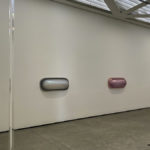

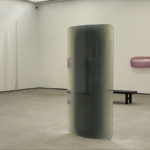
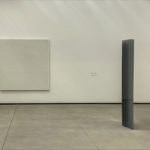

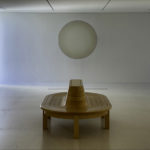
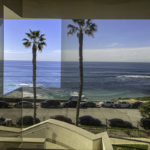
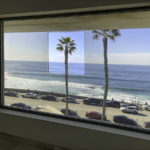
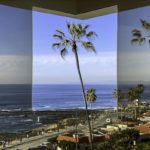
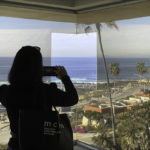
Love hearing your history and love hearing about the museum. Sounds like it’s worth the trip down. X O
oh i loved reading this, the balance of the critique and the personal was so wonderful. xox, california dreamer boy.
Hi Tom,
It was wonderful to see your pictures of the La Jolla Museum and read about your personal history with the place and the artists, and your early path to becoming the artist you are and the ones who inspired you. My path was so different!
Thanks – Bob